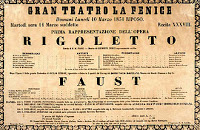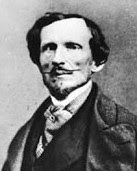Gianni Agnelli - business giant
Head of Fiat more powerful than politicians
The businessman Gianni Agnelli, who controlled the Italian car giant Fiat for 40 years until his death in 2003, was born on this day in 1921 in Turin. Under his guidance, Fiat - Fabbrica Italiana di Automobili Torino, founded by his grandfather, Giovanni Agnelli, in 1899 - became so huge that at one time in the 1990s, literally every other car on Italy's roads was produced in one of their factories. As its peak, Fiat made up 4.4 per cent of the Italian economy and employed 3.1 percent of its industrial workforce. Although cars remained Fiat's principal focus, the company diversified with such success, across virtually all modes of transport from tractors to Ferraris and buses to aero engines, and also into newspapers and publishing, insurance companies, food manufacture, engineering and construction, that there was a time when Agnelli controlled more than a quarter of the companies on the Milan stock exchange. His personal fortune was estimated at between $2 billion and $5 billion, which made him the richest man in Italy and one of the richest in Europe. It was hardly any surprise, then, that he became one of the most influential figures in Italy. Read more…
_________________________________________________________
Gaspare Campari - drinks maker
Bar owner who created classic red aperitif
Gaspare Campari, whose desire to mix distinctive and unique drinks for the customers of his bar in Milan resulted in the creation of the iconic Campari aperitif, was born on this day in 1828 in Cassolnovo, a small town approximately 30km (19 miles) southwest of the northern city. He founded the company, subsequently developed by his sons, Davide and Guido, that would grow to such an extent that, as Gruppo Campari, it is now the sixth largest producer of wines, spirits and soft drinks in the world with a turnover of more than €1.8 billion. Gaspare was the 10th child born into a farming family in the province of Pavia, where Cassolnovo is found, but he had no ambition to work on the land. After working in a local bar, at the age of 14 he went to Turin, then the prosperous capital of the Kingdom of Piedmont-Sardinia. He obtained an apprenticeship to Giacomo Bass, the Swiss proprietor of a pastry and liqueur shop on Piazza Castello. He is also said to have worked at the historic Ristorante Del Cambio, on Piazza Carignano, as a waiter and dishwasher. In 1850, by then in his early 20s and armed with the knowledge he had acquired in about eight years in Turin, he moved to Novara. Read more…
_________________________________________________________
Gabriele D’Annunzio – writer and patriot
Military hero influenced Mussolini with his distinctive style
Poet, playwright and political leader Gabriele D’Annunzio was born on this day in 1863 in Pescara in Abruzzo. He is considered to be the leading writer in Italy of the late 19th and early 20th centuries as well as being a military hero and a political activist. Some of his ideas and actions were believed to have influenced Italian Fascism and the style of the dictator, Benito Mussolini. D’Annunzio was the son of a wealthy landowner and went to university in Rome. His first poetry was published when he was just 16 and the novels that made him famous came out when he was in his twenties. At the age of 30 he began a long liaison with the actress Eleonora Duse and started writing plays for her. But his writing failed to pay for his extravagant lifestyle and he had to flee to France in 1910 because of his debts. After Italy entered the First World War, D’Annunzio returned and plunged into the fighting, losing an eye during combat while serving with the air force. He became famous for his bold, individual actions, such as his daring flight over Vienna to drop thousands of propaganda leaflets and his surprise attack on the Austrian fleet with power boats when they were moored at Buccari Bay in what is now Croatia. Read more…
_________________________________________________________
Pietro Andrea Mattioli – doctor
The first botanist to describe the tomato
Doctor and naturalist Pietro Andrea Gregorio Mattioli was born on this day in 1501 in Siena. As the author of an illustrated work on botany, Mattioli provided the first documented example of an early variety of tomato that was being grown and eaten in Europe. He is also believed to have described the first case of cat allergy, when one of his patients was so sensitive to cats that if he went into a room where there was a cat he would react with agitation, sweating and pallor. Mattioli received his medical degree at the University of Padua in 1523 and practised his profession in Siena, Rome, Trento and Gorizia. He became the personal physician to Ferdinand II, Archduke of Austria, in Prague and to Maximilian II, Holy Roman Emperor, in Vienna. While working for the imperial court it is believed he tested the effects of poisonous plants on prisoners, which was a common practice at the time. Mattioli’s interest in botany led him to describe 100 new plants and document the medical botany of his time in his Discorsi (Commentaries) on the Materia Medica of Dioscorides, a Greek physician and botanist. Read more…





























